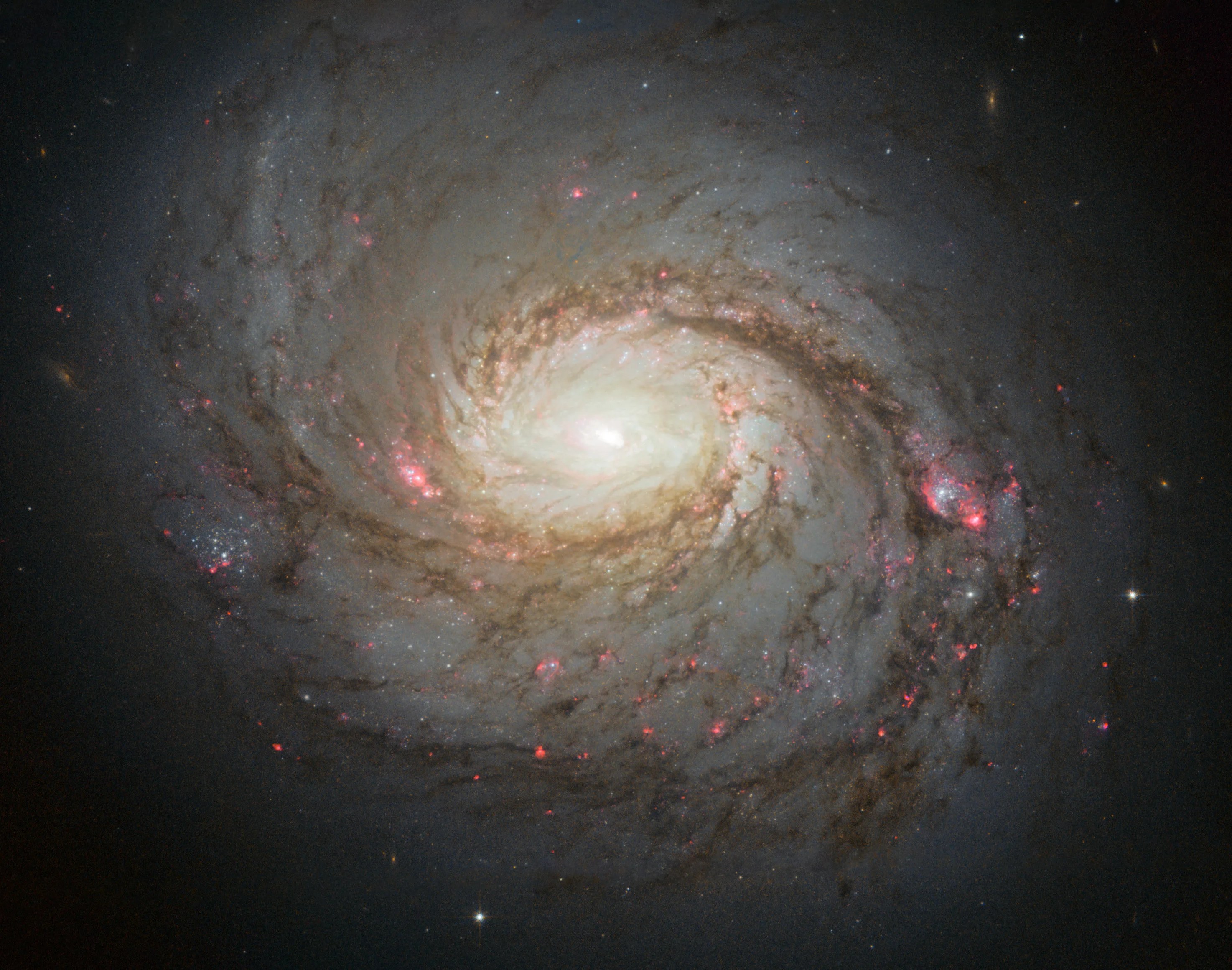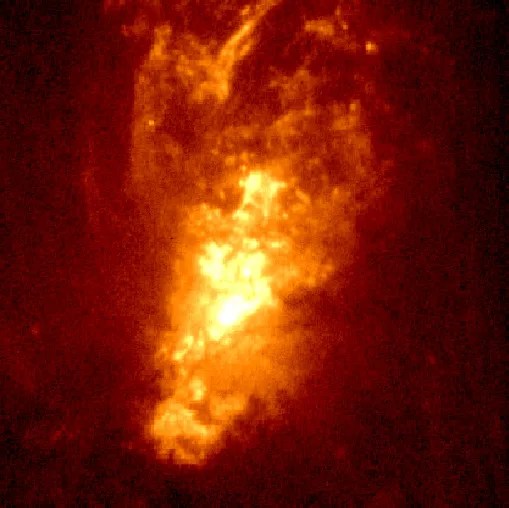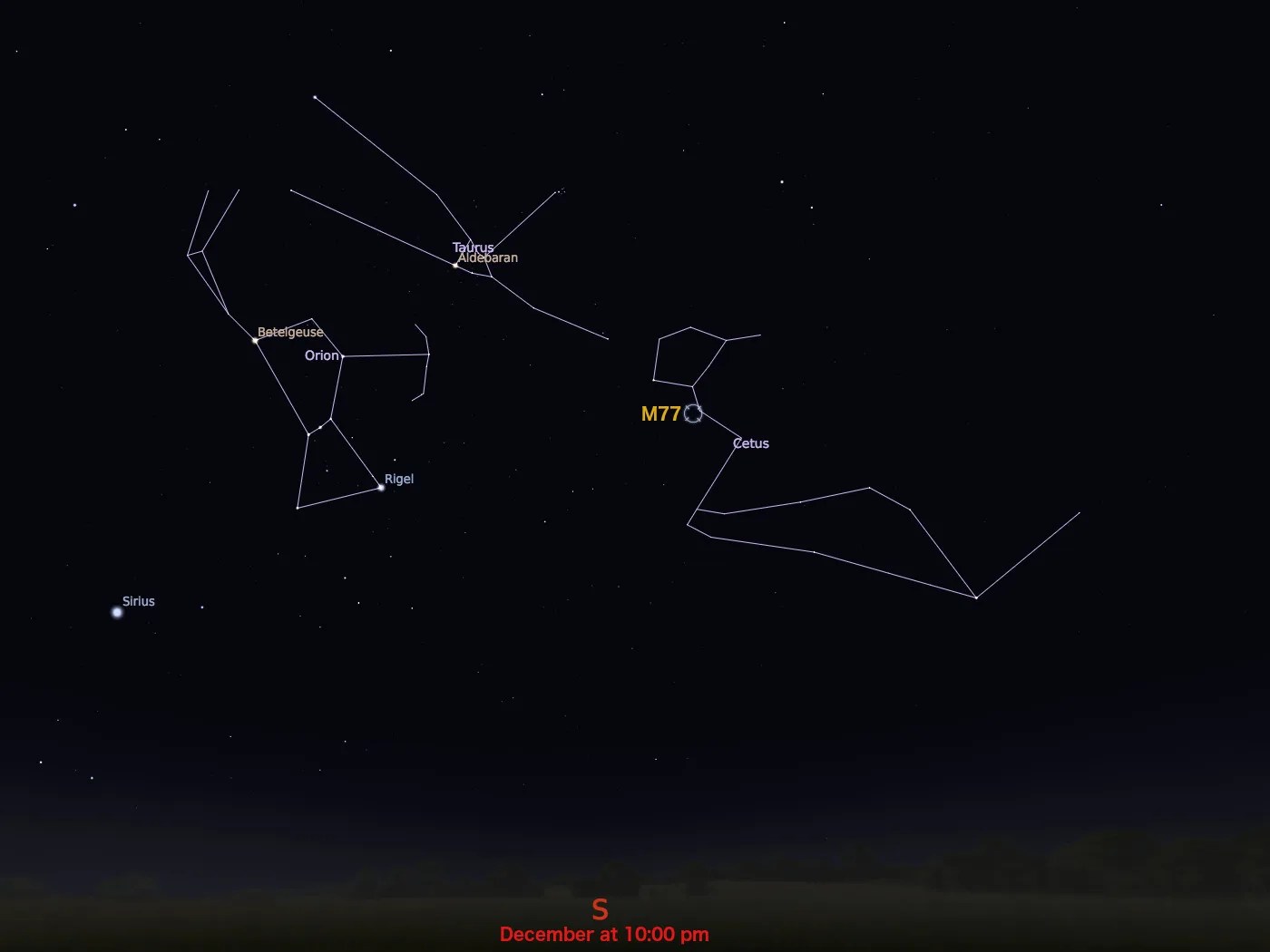Messier 77
This majestic spiral galaxy has an intensely active core.
Distance
45 million light-years
Apparent Magnitude
9.6
constellation
Cetus
object type
Spiral Galaxy

Initially identified as a nebula by the French astronomer Pierre Méchain in 1780, M77 is one of the largest galaxies in the Messier catalog. It is located in the constellation Cetus at a distance of 45 million light-years from Earth. M77 has an apparent magnitude of 9.6 and can be seen using a small telescope. It is most easily observed during December.

Hubble has captured this vivid image of M77’s center using visible and infrared observations. The streaks of red and blue in the image highlight pockets of star formation along the pinwheeling arms, with dark dust lanes wrapping around the galaxy’s starry center.
M77 is a prime example of a Seyfert galaxy, or a galaxy with an intensely active center that is obscured by gas and dust in visible light.
For more information about Hubble’s observations of M77, see:

Explore Hubble's Messier Catalog
The following pages contain some of Hubble’s best images of Messier objects.

Messier 1 (The Crab Nebula)
Better known as the Crab Nebula, Charles Messier originally mistook Messier 1 for Halley’s Comet, which inspired him to create…

Messier 2
Hubble's image of Messier 2 is comprised of visible and infrared wavelengths of light.

Messier 3
Messier 3 holds more than 500,000 stars.




